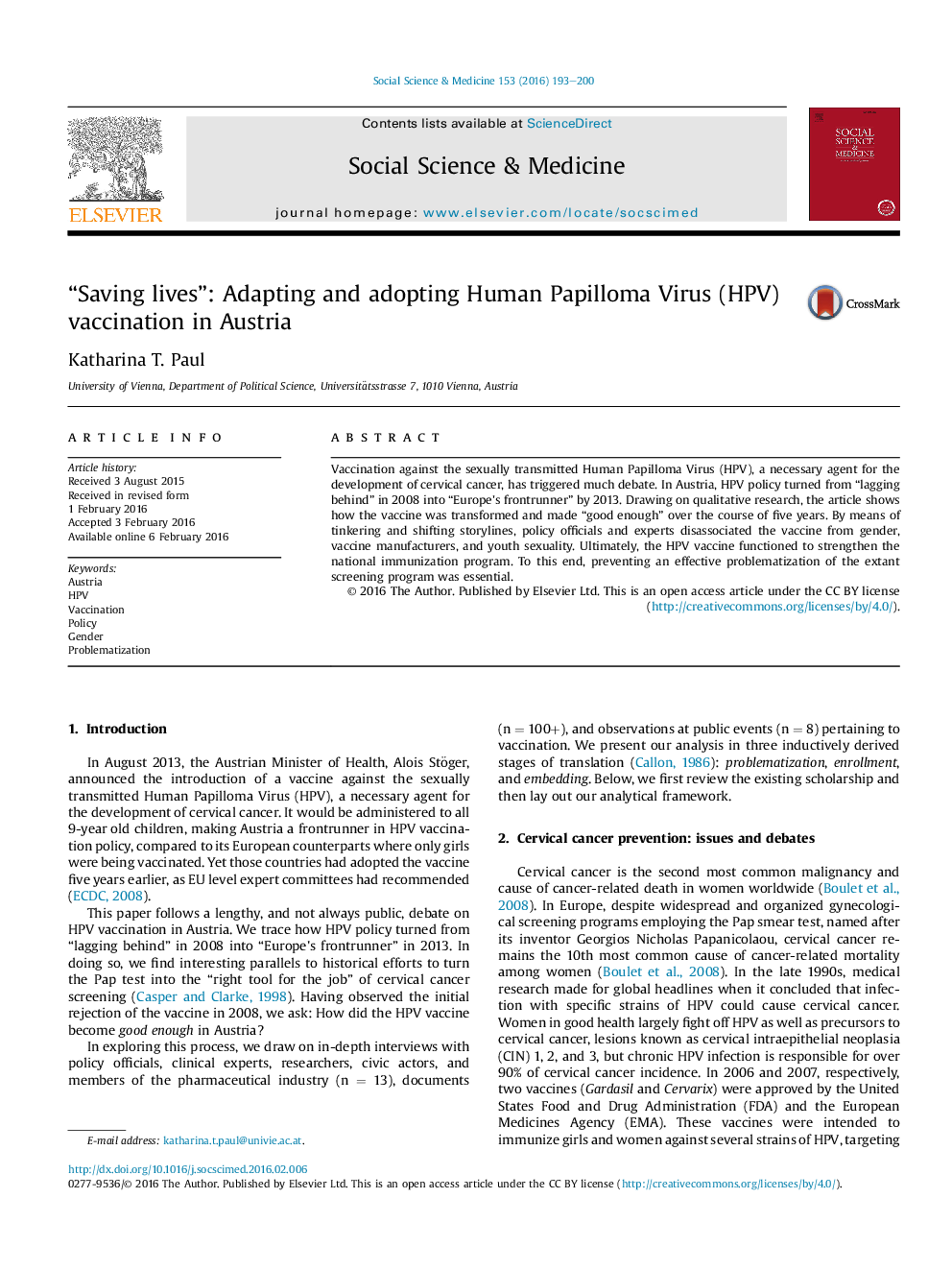| Article ID | Journal | Published Year | Pages | File Type |
|---|---|---|---|---|
| 7330560 | Social Science & Medicine | 2016 | 8 Pages |
Abstract
Vaccination against the sexually transmitted Human Papilloma Virus (HPV), a necessary agent for the development of cervical cancer, has triggered much debate. In Austria, HPV policy turned from “lagging behind” in 2008 into “Europe's frontrunner” by 2013. Drawing on qualitative research, the article shows how the vaccine was transformed and made “good enough” over the course of five years. By means of tinkering and shifting storylines, policy officials and experts disassociated the vaccine from gender, vaccine manufacturers, and youth sexuality. Ultimately, the HPV vaccine functioned to strengthen the national immunization program. To this end, preventing an effective problematization of the extant screening program was essential.
Related Topics
Health Sciences
Medicine and Dentistry
Public Health and Health Policy
Authors
Katharina T. Paul,
